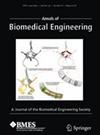Metabolic Profiles of Encapsulated Chondrocytes Exposed to Short-Term Simulated Microgravity
Abstract
The mechanism by which chondrocytes respond to reduced mechanical loading environments and the subsequent risk of developing osteoarthritis remains unclear. This is of particular concern for astronauts. In space the reduced joint loading forces during prolonged microgravity (10−6 g) exposure could lead to osteoarthritis (OA), compromising quality of life post-spaceflight. In this study, we encapsulated human chondrocytes in an agarose gel of similar stiffness to the pericellular matrix to mimic the cartilage microenvironment. We then exposed agarose-chondrocyte constructs to simulated microgravity (SM) for four days using a rotating wall vessel (RWV) bioreactor to better assess the cartilage health risks associated with spaceflight. Metabolites extracted from media and agarose gel constructs were analyzed on liquid chromatography-mass spectrometry. Global metabolomic profiling detected a total of 1205 metabolite features, with 497 significant metabolite features identified by ANOVA (FDR-corrected p-value < 0.05). Specific metabolic shifts detected in response to SM exposure resulted in clusters of co-regulated metabolites, with glutathione, nitrogen, histidine, vitamin B3, and aminosugars metabolism identified by variable importance in projection scores. Microgravity-induced metabolic shifts in gel constructs and media were indicative of protein synthesis, energy and nucleotide metabolism, and oxidative catabolism. Microgravity associated-metabolic shifts were consistent with our previously published early osteoarthritic metabolomic profiles in human synovial fluid, suggesting that even short-term exposure to microgravity (or other reduced mechanical loading environments) may lead to the development of OA. This work further suggests the potential to detect these metabolic perturbations in synovial fluid in vivo to ascertain osteoarthritis risk in astronauts.

 求助内容:
求助内容: 应助结果提醒方式:
应助结果提醒方式:


